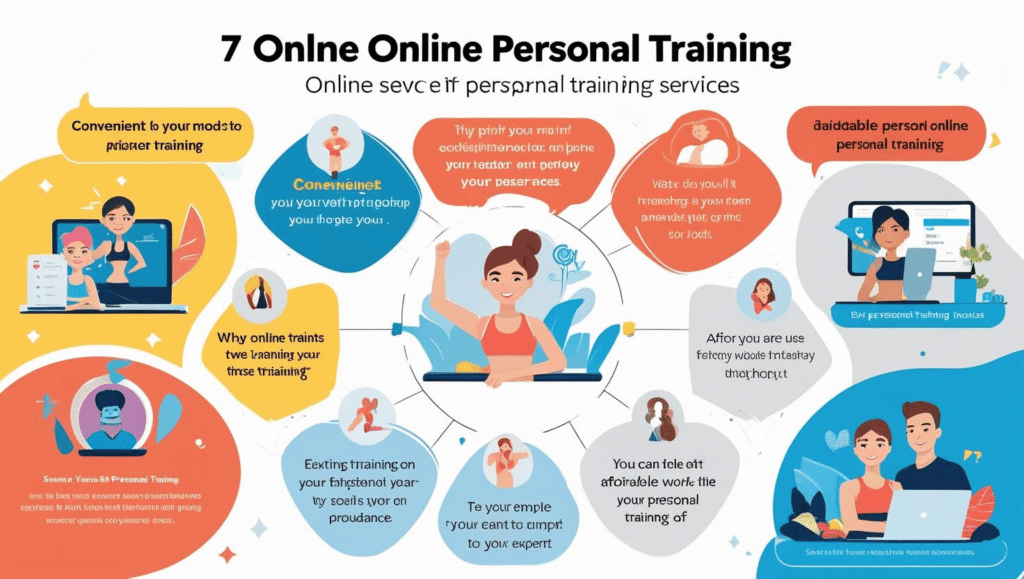Today, companies see how important employee health and wellness are for success. They’re starting to use Welless prgrams, or nutrition wellness programs, in the workplace. These programs are changing how employees think about health and are helping companies in many ways.
So, what makes Corporate Wellenss Initiatives special? How do they help promoting employee health? Let’s explore how these programs can make a big difference for both employees and companies.
Key Takeaways
- Nutrition wellness programs are becoming a key part of corporate strategy, helping employee health and company success.
- These programs bring many benefits, like better productivity and cost savings, making them a smart choice for businesses.
- To work well, these programs need a full plan, including design, getting everyone involved, and using resources wisely.
- Creating a healthy work culture is key, with leaders and employees playing big roles.
- It’s important to check how these programs are doing, so companies can see their impact and plan for the future.
Understanding Workplace Wellness Programs and Their Impact
Workplace wellness programs are key in today’s business world. They help promote employee health and wellbeing. These programs meet the unique needs of companies, improving productivity and saving costs.
Key Benefits for Organizations
Starting Workplace Wellbieng Strategies brings many benefits. Companies see better employee morale, less absenteeism, and keep talent longer. These efforts also cut down on healthcare costs, as healthier workers need less medical care.
Impact on Employee Productivity
Wellness programs boost employee productivity. When workers feel supported and well, they focus better and work more efficiently. This leads to more energy, less stress, and smarter decisions, helping the company succeed.
Cost-Effectiveness Analysis
| Metric | Without Wellness Program | With Wellness Program |
|---|---|---|
| Healthcare Costs | $5,000 per employee | $3,500 per employee |
| Absenteeism | 10 days per employee | 6 days per employee |
| Productivity | 85% of optimal | 92% of optimal |
The table shows how wellness programs save money. Companies see lower healthcare costs, less time off, and better work. This leads to a good return on investment and better performance.

“Investing in employee wellness is not just a moral obligation, but a strategic business move that can significantly impact an organization’s bottom line.”
Core Components of Effective Nutrition Programs
Creating effective nutrition programs for work needs a detailed plan. It must meet the varied needs of employees. At the heart of these programs are key elements that boost preventive health programs and Wellness Coaching Services.
A good nutrition program starts with clear dietary advice and meal planning tips. It teaches about balanced eating, portion sizes, and eating nutrient-rich foods daily. This knowledge helps employees develop better eating habits and lasting lifestyle changes.
Another important part is comprehensive nutrition education. This includes workshops, cooking demos, and online resources. Topics like macronutrients, micronutrients, and nutrition’s impact on health are covered. This education helps employees make better food choices and take charge of their health.
Adding personalized support and counseling is crucial for preventive health programs. One-on-one sessions with dietitians or wellness coaches offer customized advice. This tailored approach helps with specific dietary needs, chronic conditions, and long-term health goals.
In summary, effective nutrition programs in the workplace are holistic. They empower employees, encourage change, and support their health. By focusing on these key areas, companies can foster a culture of health and wellness among their staff.
“Investing in comprehensive preventive health programs benefits both employees and the company. It leads to better productivity, lower healthcare costs, and a more engaged team.”

To wrap up, the main parts of effective nutrition programs at work are:
- Dietary guidelines and meal planning strategies
- Comprehensive nutritional education and training
- Personalized support and counseling from health professionals
By combining these elements, companies can help their employees make smart food choices. This leads to healthier habits, better wellbeing, and increased productivity.
Implementing Corporate Wellness Solutions
Creating effective corporate wellness programs needs a careful plan. This part talks about the main steps and things to think about for a successful launch in a company.
Program Design Strategies
First, understand what your company needs and who your employees are. Knowing this helps you focus on what’s important, like Mindfulness at work or Fitness and nutrution Plans. Then, you can make a detailed plan with different activities and steps to help.
Stakeholder Engagement
Good wellness programs need everyone involved, like top leaders, HR, and workers. When everyone feels they’re part of it, the program fits with the company’s goals and speaks to the people it’s for. It’s key to keep talking, get leaders on board, and listen to feedback.
Resource Allocation
Setting up a wellness program takes planning and resources, like money and people. Think about your budget, who you need, what tech you need, and how to keep it going. A good plan helps your wellness program last and succeed.
| Key Considerations | Recommended Strategies |
|---|---|
| Program Design |
- Conduct a comprehensive needs assessment
- Develop a holistic program that addresses identified focus areas
- Tailor activities and interventions to the specific organizational context
| Stakeholder Engagement |
- Foster a shared sense of ownership and commitment among key stakeholders
- Ensure strong leadership buy-in and support
- Implement effective communication and feedback mechanisms
| Resource Allocation |
- Develop a comprehensive budget and resource plan
- Allocate sufficient staffing and technology infrastructure
- Ensure ongoing maintenance and evaluation of the program
By focusing on these important points, companies can set up wellness programs that really help both the business and its workers.
Essential Elements of Workplace Wellness Programs
Creating a good workplace wellness program needs careful planning. It must meet the many needs of employees. The key parts of these programs help make a healthy work environment. Let’s look at the main elements for today’s workplace wellness programs.
Stress Management Techniques
Workplace stress can hurt employee work and happiness. Adding Stress management techniques to your program helps employees deal with stress. This includes mindfulness, relaxation, and counseling.
Physical Activity Initiatives
Getting employees to be active is key for their health. Your program can offer fitness classes and gym deals. These Employee health programs boost fitness and team spirit.
Mental Health Support
It’s important to care for employees’ mental health today. Your program should offer help for stress, anxiety, and more. This includes counseling, workshops, and self-care tips.
Adding stress management, physical activity, and mental health support to your program is smart. It makes a big difference in employee health and happiness. This leads to better work, happier employees, and a strong team culture.
| Element | Description | Benefits |
|---|---|---|
| Stress Management Techniques | Mindfulness practices, relaxation exercises, and counseling services to help employees manage workplace stress | Improved work-life balance, increased productivity, and better mental well-being |
| Physical Activity Initiatives | On-site fitness classes, subsidized gym memberships, and other opportunities to promote an active lifestyle | Enhanced physical health, increased energy levels, and fostered sense of community |
| Mental Health Support | Counseling services, mental health workshops, and education on self-care strategies | Better management of stress, anxiety, and other mental health concerns, leading to improved overall well-being |
“Investing in the well-being of our employees is not just the right thing to do, but it also pays dividends in terms of increased productivity, reduced absenteeism, and a stronger organizational culture.”
Creating a Culture of Health and Wellbeing
Building a culture of health and wellbeing in a company is key to its success. By focusing on employees’ physical, mental, and emotional health, companies gain many benefits. These benefits go beyond the workplace.
Leadership Engagement
Leaders play a huge role in promoting wellness in the workplace. When executives and managers support Promoting Organizational Health , they set a great example. This inspires their teams to live healthier lives.
When leaders show they care about wellness, it shows everyone that it’s important. This sends a strong message.
Employee Participation Strategies
- Use incentives and recognition to get people involved in wellness programs.
- Organize team activities and social events that promote healthy living.
- Offer flexible work options to help employees focus on their well-being.
Communication Frameworks
Good communication is crucial for a successful wellness program. Clear, consistent, and open communication helps employees know about resources and benefits. It also encourages them to take part in their health journey.
| Communication Channel | Objective | Examples |
|---|---|---|
| Internal Newsletters | Raise Awareness | Share success stories, upcoming events, and wellness tips |
| Intranet/Digital Platforms | Provide Resources | Offer interactive tools, educational materials, and program registration |
| Town Hall Meetings | Foster Dialogue | Listen to feedback, address concerns, and stress the importance of wellness |
Creating a culture of health and wellbeing brings many benefits. These include better employee engagement, productivity, and promoting organizational health. It also helps reduce healthcare costs. The secret is to align leadership, employee involvement, and communication. This turns the workplace into a thriving, wellness-focused environment.
Measuring Success in Wellness Programs
It’s key for companies to check how well Workers health campaigns and Wellness Incentives work. They need to know their impact to make smart choices. By looking at important signs, collecting data, and analyzing it, they can learn a lot.
One main way to see if a wellness program works is by checking employee engagement. Companies can watch how many people join, what they say, and if they start living healthier. Surveys and group talks help add more details to the numbers.
Companies should also keep an eye on employee health and well-being. They can do this by checking health tests, health risk checks, and if people are missing less work and spending less on health. This shows the real benefits of their wellness efforts.
Another key thing is the return on investment (ROI). Companies should see if their wellness programs save money (like less health costs, more work done). This helps show why they should keep and grow these programs.
“Investing in employee wellness programs not only improves the health and well-being of our workforce, but also contributes to our overall business success. The data we’ve collected has been invaluable in shaping our strategic approach to workplace wellness.”
By using a detailed plan to check how well their workers health campaignes and wellness incentives work, companies can make better choices. This helps keep their employees healthy, productive, and happy.
Nutrition Education and Awareness Initiatives
Teaching employees about nutrition is key in corporate wellness programs. It helps create a healthy workplace culture (healthy workplace culture). It also offers Employee health Benefits (healthcare benefits for employees).
Workshop Planning
Workshops led by experts are great for learning. They cover topics like portion control and meal planning. Employees get to do hands-on activities and discuss important nutrition topics.
Digital Resource Development
Online content is also important. Companies can make videos and web modules. This way, employees can learn anytime they want.
Ongoing Support Systems
- Individual nutrition counseling sessions with qualified professionals
- Peer-to-peer support groups or online communities
- Healthy recipe databases and meal planning tools
- Incentive-based challenges or competitions to promote healthy eating
Having a strong support system is vital.
Integration of Technology in Wellness Solutions
In the world of Wellness Programs at work, technology has changed everything. Mobile apps and wearable devices are making wellness programs better. They’re changing how people use and enjoy Corporate Wellness Initiatives.
Companies are using technology to make wellness programs more personal. Mobile apps let employees track their health and join in on fun challenges. This helps build a sense of community and keeps people motivated.
Wearable fitness trackers are key in Wellness Programs. They track how active and well-rested employees are. This info helps companies create better support for their workers.
Digital platforms are also big for Corporate Wellness Initiatives . They make it easy to manage wellness programs. Companies can see how their efforts are working and improve their plans.
Technology is making wellness programs better and better. It’s helping companies keep their employees happy and healthy. By using technology, Wellness Programs and Comporate Wellness Initiatives can really make a difference.
Building Sustainable Wellness Programs
To make Promoting Employee Health last, you need a smart plan. Always check and update your Workplace Wellbieng Stratigies. This keeps your wellness efforts effective and meaningful. It’s important to regularly look at what employees need, how well your programs work, and your budget.
Creating a culture of health is key for lasting success. Get your leaders to support wellness efforts. Also, let employees help shape their own health plans. Talk openly, offer ongoing help, and celebrate small wins to keep everyone excited and involved.
It’s vital to keep up with new needs and trends in wellness. Learn about the latest in the field, use new tech, and work with wellness experts. By always improving your Promoting Employee Health and Workplace Wellbieng Stratigies , you’ll build a strong and lasting wellness program. This will help your company grow and thrive for many years.




